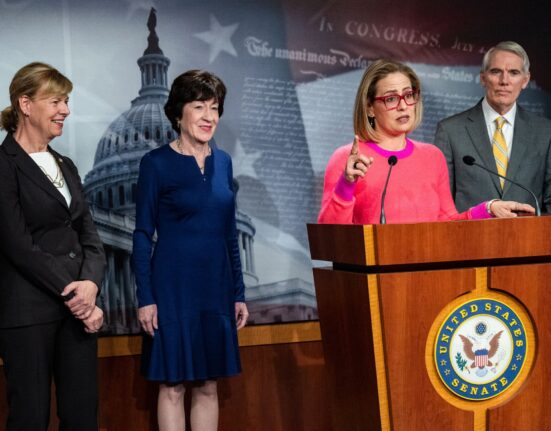SASKATOON, Sask.—Imagine a room filled with Canada’s 13 provincial and territorial leaders sitting down with Prime Minister Mark Carney. The air thick with anticipation and the weight of responsibility. This wasn’t just any meeting; it was hailed as the
“best meeting we’ve had in 10 years”
by Ontario Premier Doug Ford.
The gathering at TCU Place in Saskatoon was not merely about discussions—it was about laying the groundwork for something more significant. It was about paving the way for projects that could shape the very fabric of Canada’s future. As Carney rallied the leaders to brainstorm major infrastructure and energy initiatives, there was a shared sense of purpose, a collective vision for nation-building projects.
In a world where division often dominates headlines, this meeting stood out as a beacon of unity. The joint statement signed by all participants highlighted their agreement on what would be considered projects of national interest. These projects were envisioned to strengthen Canada’s autonomy, ensure resilience and security, garner Indigenous support, and drive clean growth—a comprehensive approach aimed at securing a prosperous future for generations to come.
Carney’s call for fast-tracking major energy and infrastructure endeavors resonated strongly with premiers who brought forth diverse proposals—from ports development to oil pipelines—each carrying the promise of economic growth and strategic significance.
While specific projects were discussed behind closed doors, one thing became clear: the need for legislative action to transform these ideas into reality. Carney emphasized this point during a news conference following the meeting, underlining the importance of enabling legislation that would expedite project approvals.
As conversations delved into potential ventures like Manitoba’s Port of Churchill or Ontario’s Ring of Fire development, optimism mingled with pragmatism. Premier Ford expressed unwavering confidence in Carney’s commitment to streamlining processes essential for project realization—a sentiment echoed by many in attendance.
Amidst laughter and camaraderie, Ford playfully likened Carney to “Santa Claus,” symbolizing hope and fulfillment of promises made during this historic rendezvous. Jokes aside, there was an undeniable sense of purpose driving these discussions forward—a shared determination to bring ambitious plans to fruition.
The spotlight also fell on Alberta Premier Danielle Smith’s impassioned plea for an oil pipeline linking her province to British Columbia—a proposal laden with economic implications and symbolic value. Smith underscored its pivotal role in signaling Canada’s openness to investment while addressing concerns around national unity—a theme reverberating across provinces.
With B.C.’s Deputy Premier Niki Sharma highlighting differing viewpoints on project priorities, discussions veered towards reconciling regional interests within a broader framework of national development strategies—an intricate dance between local aspirations and overarching goals.
Carney’s vision encompassed not just infrastructural expansion but also environmental stewardship—introducing concepts like decarbonized Canadian oil production as part of an overarching strategy towards sustainable growth. The Pathways Alliance’s innovative approach towards reducing carbon emissions through technology showcased pioneering efforts aligned with evolving global trends.
As deliberations continue post-meeting, one thing remains certain—the journey towards realizing these grand ambitions is only just beginning. With challenges ahead and opportunities aplenty, Canada stands at a crossroads where decisions made today will shape tomorrow’s landscape.









Leave feedback about this